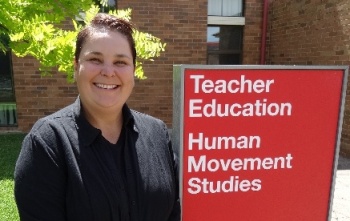 Recent
media attention to an Australian Sports Commission report showing low levels of
media coverage of women's sport reveals nothing new to a Charles Sturt
University (CSU) researcher.
Recent
media attention to an Australian Sports Commission report showing low levels of
media coverage of women's sport reveals nothing new to a Charles Sturt
University (CSU) researcher.
Dr Chelsea Litchfield, lecturer in the CSU School of Human Movement Studies in Bathurst, has researched the issue for many years and says, "The figures are not a surprise and are representative of many studies that have been carried out in the past, particularly in the US, UK and Australia.
"The 'Towards a Level Playing Field' research is actually from several years ago and data was collected between 2008-09. It focuses on newspapers, magazines and television (including pay television). The findings were summarised in a more recent Australian Sports Commission report, Women in Australian Broadcasting Analysis (April 2014)."
Dr Litchfield and CSU colleague Dr Jaquelyn Osborne recently published the results of their research into newspaper coverage of gendered sports between 2008-12. Their study, 'Women in the sports pages: A brief insight into Olympic and non-Olympic years in Australia'*, compared the coverage that women received during Olympic years (2008, 2012) and non-Olympic years (2009, 2010 and 2011) in The Australian, the Sydney Morning Herald, and the Daily Telegraph.
"Our study showed that during non-Olympic years, the coverage of female athletes was around 4 per cent and during the Olympics it was around 14 per cent," Dr Litchfield said. "Animal sports accounted for an average of 8.5 per cent of coverage during these periods.
"The focus of our research was not just on the quantitative context, but also on the ways that women are represented in any newspaper coverage.
"For example, women are often infantilised, feminised and gender-marked in the sports media. The problem with such a culture means that power remains in the traditional places and spaces in sports and sports media.
"In addition, such a culture sends out a message to the wider community that women's sport is unimportant and unworthy of attention, and this serves to reinforce and legitimize the patriarchal male sport model as hegemonic."
Dr Litchfield is embarking on new research about the previously unexamined issue of online spaces for gendered representation in sports coverage.
"I am in the process of developing a study to investigate online newspapers during the 2016 Olympic Games in Rio de Janeiro," Dr Litchfield said. "Also, I will be completing a netnographic analysis of the representation of gender through Olympic social media spaces during this time."
The latter part of the project will be completed with international colleagues Dr Ian Jones and Dr Emma Kavanagh at the University of Bournemouth (UK), and with CSU academic, Dr Jaquelyn Osborne.
"This project will expand on the existing research on women in the sports media," Dr Litchfield said. "Furthermore, the context of unlimited space in online media formats and limited text space in social media formats should prove to be very interesting."





Social
Explore the world of social